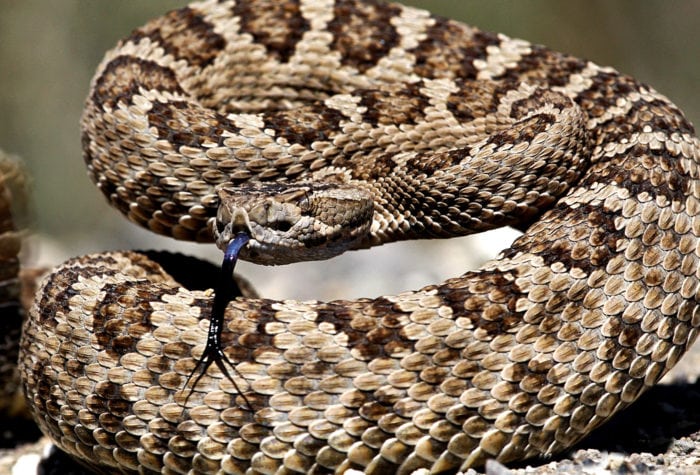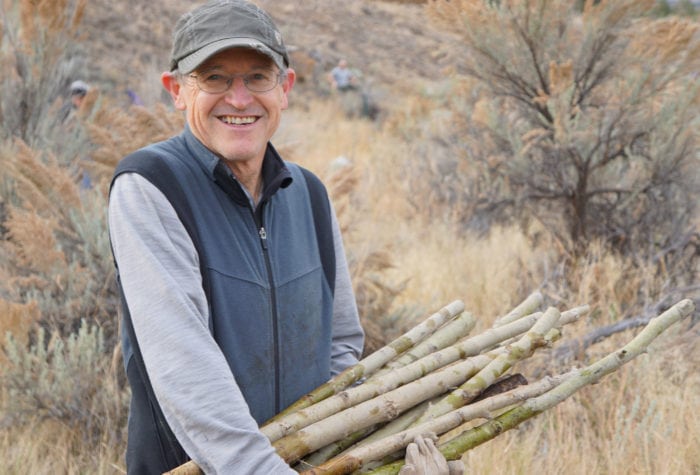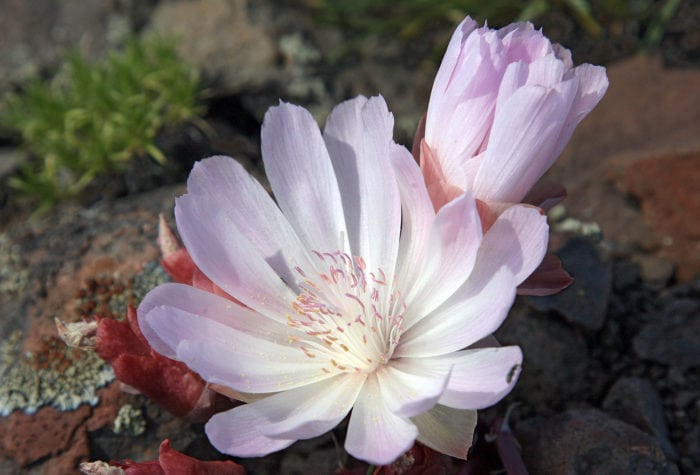2025 Pine Creek Spring Restoration (September)
Organizer: Gena Goodman-Campbell
Dates: September 26-28, 2025
Region: John Day River Basin
Difficulty Rating: Level 3: Challenging
Maximum Group Size: 15 participants
About the place
This project takes place on the Pine Creek Conservation Area, which is owned and managed by the Confederated Tribes of Warm Springs. Pine Creek is within the traditional lands of the Tenino people, a band of the Warm Springs Tribe and the Northern Paiute people. The area is also part of the traditional lands of the Cayuse, one of the Confederated Tribes of the Umatilla Indian Reservation.
Pine Creek Conservation Area is located near Clarno, Oregon and is a protected property managed for its wildlife habitat. Pine Creek is a tributary of the John Day River and runs for over 10 miles through the Conservation Area. It provides important habitat for steelhead and a diversity of wildlife and bird species. ONDA has organized restoration projects at Pine Creek Conservation Area for over 20 years. This project contributes to this work by restoring a system of springs that feed Pine Creek.
About the stewardship work
This project will support watershed-wide restoration efforts by removing juniper trees from a system of springs that feed Pine Creek, increasing water levels in the small streams fed by the springs as well as Pine Creek itself. Volunteers will use hand tools such as loppers and handsaws to remove small junipers from springs and surrounding areas. Volunteers will also reuse cut juniper material to add structure to stream channels to reconnect them to their floodplains and slow seasonal flows. This will support existing willows and other riparian plants as well as future restoration plantings.
Trip timeline
- Friday, September 26, 4-7 p.m.: Meet at the campsite near the project location to set up camp and have dinner. After dinner, we’ll have an orientation about the upcoming work.
- Saturday, September 27, 8 a.m.: Walk a short distance to the work site. Begin working our way up the stream from our parking area. Volunteers should plan to be out all day and be prepared for a full day of work.
- Saturday, September 27, 4 p.m.: Return to camp to rest, cook, and explore.
- Sunday, September 28, 8 a.m.: After breakfast we will pack up camp before walking to the work site to pick up where we left off the previous day.
- Sunday, September 28, 3 p.m.: Complete our work, walk back to the campsite and head home.
Camp
We will be car camping at a campground just off of Highway 218 on the Pine Creek Conservation Area. The campground is on a gravel road and is accessible for any vehicle. There are pit toilets at the campground, but there is no potable water.
Difficulty
The physical demands of this trip are challenging. Work involves hiking over uneven ground, using hand tools such as shovels, loppers, clippers, and handsaws, working in thick and prickly vegetation, and bending and kneeling for prolonged periods.
Participant responsibilities
Participants are responsible for providing their own camping gear, food and water/beverages. We recommend bringing your own work gloves to provide a comfortable fit, but it is not required. Sturdy hiking boots, long pants, long sleeves and eye protection will be required for the work.
Gear provided
ONDA will provide all of the training, tools, and supplies needed to complete the work. Along with expert leadership, ONDA will also bring some group camping gear like tables, chairs, shade tents, and extra potable water. Extra gloves and eye protection will be available if needed.
Registration
An ONDA registration application and medical form are required for this trip.
Apply Now
You will receive a confirmation email within 2 weeks of submitting your registration form. This email will provide information regarding trips where you are a confirmed participant and trips that are full where you have been placed on the waitlist.
Six weeks before the start of the trip, the trip leader will send out an email reconfirming participation. Based on responses, any open spaces will be filled with people from the waitlist.
Three weeks before the trip start date, registered and confirmed participants will receive driving instructions, carpooling options, maps, and additional information in an email sent by the trip leader.
If you have any questions in the meantime, please don’t hesitate to contact the trip leader.
Your Trip Leader
This trip will be led by Gena Goodman-Campbell, ONDA's Stewardship Director. If you have any questions or need additional information you can contact her via email at gena@onda.org
Meet GenaRestoring Desert Ecosystems
ONDA works with partners, communities and the public to improve habitat quality, create healthy ecosystems, sustain clean water and support biodiversity in the high desert’s most ecologically important areas. What […]
Read More

